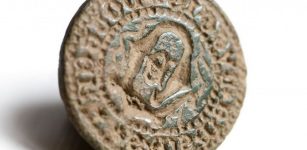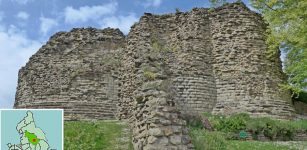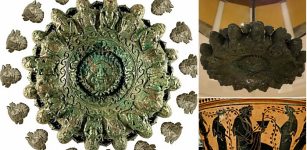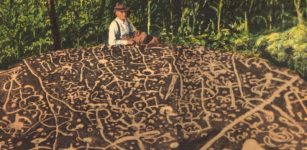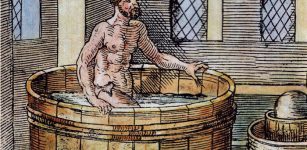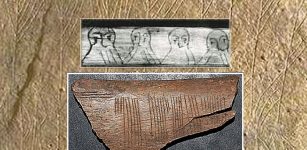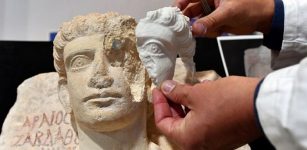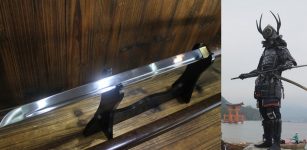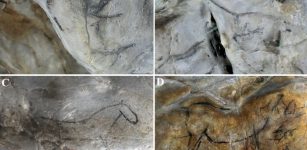‘Incredibly Mysterious’ Bronze Age Gold Penannular Ring Found In Norfolk
Jan Bartek - AncientPages.com - Recently declared a treasure, it takes one look to realize this Bronze Age ring is unusual. The ancient gold ring was found by a metal detectorist near Aldringham cum Thorpe in north Norfolk, UK.
The purpose of the Bronze Age ring is unknown. Image credit: Andrew William / Norfolk County Council
Measuring 14.5mm (0.5in), the artifact is called a penannular ring because its shape is an incomplete ring with a small break in the circumference. The purpose of penannular rings is unknown and open to debate. Experts suggested these were wig-rings, money rings, or maybe even hair-rings. Some archaeologists suggested these were ornaments worn in the hair, but evidence supporting this theory is lacking. These objects could also have been lucky charms, but these are all guesses. Scholars have been unable to determine why ancient people produced penannular rings, and how they used these artifacts.
"The uncertainties around their use are complicated by the fact that very few are recorded from secure archaeological contexts. Two examples from Scotland, however, were recovered as part of a hoard and from a cave site, in sequences dating to the Late Bronze Age, circa 1150-800 BC, although given their predominant distribution in the south of England, they may have been introduced slightly earlier.
This example from Aldringham Cum Thorpe adds to a growing corpus of evidence for penannular rings recovered from Britain and Ireland. 172 are at present recorded nationally on the Portable Antiquities Scheme database. The majority were recovered from the south of England around Sussex-Wessex, which tells us that their manufacture was probably associated with this area.
Penannular rings can be either composed entirely of gold or have gold plating over a copper alloy or lead core. Their designs are varied: some can be plain, some inlaid with black and/or silver bands, while others demonstrate alternating bands of yellow and whiter gold as in this example," Suffolk County Council explains.
The enigmatic Bronze Age ring has now been donated to Norwich Castle Museum. Its curator, Tim Pestell, has praised the metal detectorist and landowner for giving an "incredibly mysterious" Bronze Age gold penannular ring to a museum.
"It's Norfolk people helping to build up Norfolk county collections for future generations," Pestell told the BBC.
Pestell explained the museum is trying to acquire all the county's Bronze Age gold finds to its collections, and this magnificent ring is naturally a treasure.
Image credit: Andrew William / Norfolk County Council
"We're very, very selective about what we acquire because we record about 1,600 finds a year and we take in a quarter of 1%, so what we really do try to do is bring in objects that enhance our collection," Pestell explained. He also added that prehistoric gold was "not at all common" and this object had "an incredible potential to unlock future stories."
The Bronze Age gold penannular ring in the museum collection allows experts to study it and eventually "create a narrative about how people lived, worked and died in the past."
See also: More Archaeology News
About 12 gold penannular rings have been found in the county since the Portable Antiquities Scheme was set up in 1997.
"There are something like 150 in the whole country, so not everyone would have had one," said Dr. Pestell.
Written by Jan Bartek - AncientPages.com Staff Writer




